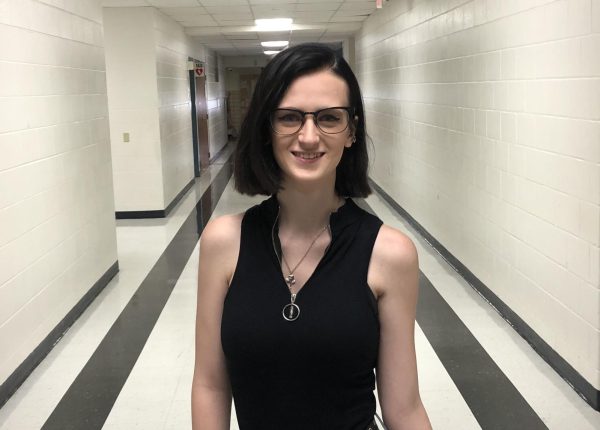School dress codes. We all know them and the majority of students hate them.
What makes it harder is many of the fashion trends these days. Several would seem appropriate for a school setting, but according to the district’s handbook, they aren’t. In turn, that makes it hard to follow the dress code.
However, it’s not only fashion trends that make it difficult to abide by the dress code. It also comes down to a student’s body type.
Let’s start with something major about the dress code – jeans, skirts and shorts. Among primarily female students, those types of clothes are a huge deal.
I firmly believe that holes in jeans shouldn’t be a major thing. Rips in jeans aren’t as much of a distraction as they make it out to be. I also believe that crop and halter tops should be allowed as long as there is an inch limit when arms are raised.
For jeans, holes aren’t allowed above the knee basically at all. Fashion trends show holes as a cute, popular thing, which makes it hard to find jeans without any. As long as things that shouldn’t be shown aren’t, they should be allowed without having to wear leggings under them.
If the student has holes above the knee, leggings are required underneath. It’s Texas. It’s hot practically all year round. That isn’t good for the students, which could lead to them being overheated from it.
If the student has a skirt or shorts three inches above the knee, it isn’t allowed, according to the district handbook. Those are hard to come by as shorts are meant to be short by fashion companies.
Now, some skirts sold are technically allowed at school because they are within the length. However, some students are tall, making it hard to find skirts within the allowed length. In some cases, leggings underneath are OK with them.
I’m a female student who’s 5-foot-6. I understand the issue with finding skirts and shorts that work.
Some teachers and parents may say, “Just go a size up then you’ll get the right length.”
While that may work with some, other students have long legs and a smaller waist. I’m a tall student, but I have a 28-inch waist. Anything I wear that is a size up from a small will fall. That’s the same for many other students out there, leading them to just wear jeans year-round.
Let’s talk about shirts now. Crop tops. Halter tops. Those two things aren’t allowed in schools. I get it if they’re super short crops or if the halter is V-necked and/or tied around the neck. However, a lot of the time, they aren’t.
One of the major fashion trends is crops and halters. It’s hard to go to the store for back-to-school shopping to get new clothes and not find crop and halter tops.
Here’s an easy solution for crop and halter tops so students can wear them. If the top isn’t showing more than 2 to 3 inches of skin when the arms are lifted above the head, then they are allowed.
In a situation where a student breaks the dress code and gets caught, there are consequences.
Violations one and two: The student must call a parent to bring new clothes for them, or the parent must take the student home to change clothes. This will be the only two times that this is allowed.
Violations three and up: The student will be assigned ISS every dress code violation after.
It’s also difficult for some students to follow the dress code because they can’t afford to buy clothes to follow it.
I’ve been dress-coded this year for my jeans having rips on my thighs. I told them my only pair of non-ripped jeans was being washed at home. I’d been told I should have gotten new jeans over the weekend, but I didn’t have money for them.
I got sent home to change, so I added leggings underneath another pair of jeans.
While dress codes are necessary for schools to keep people from dressing inappropriately, some are hard to follow due to fashion trends, student height differences and financial reasons.
That’s why dress codes must be loosened to fit situations like those. Looser dress codes would allow students with different body types or who can’t afford to find clothes to fit today’s strict dress codes.


